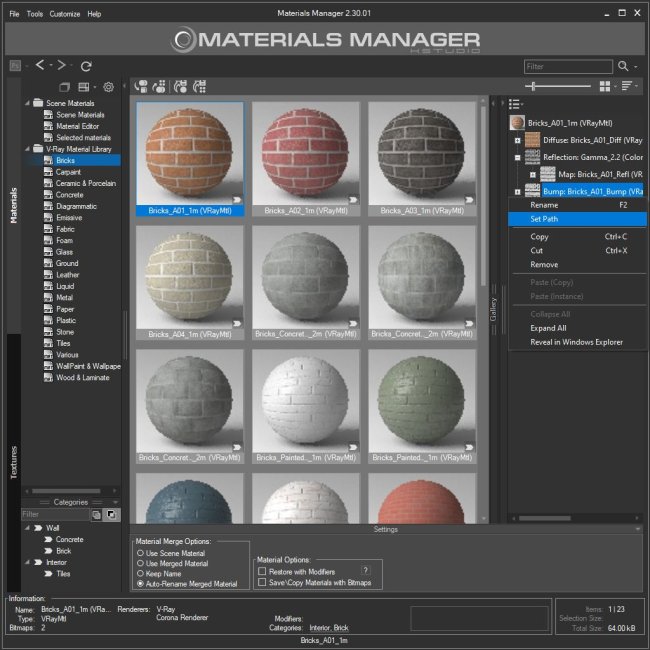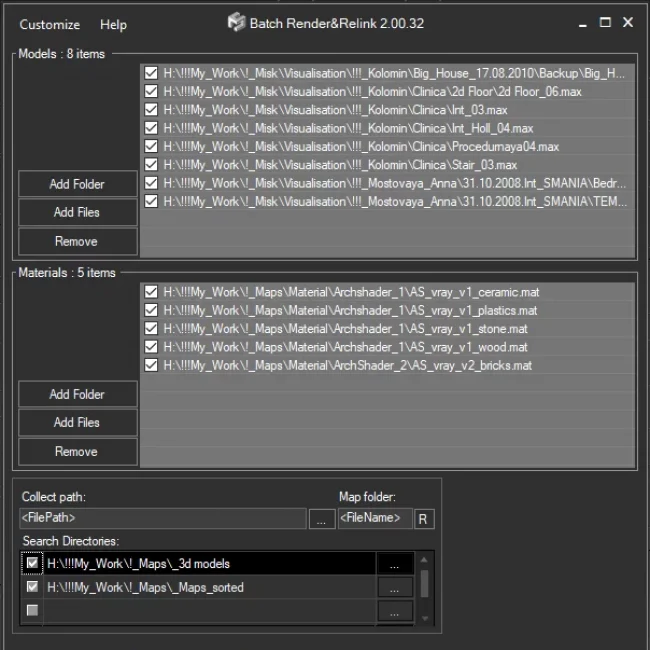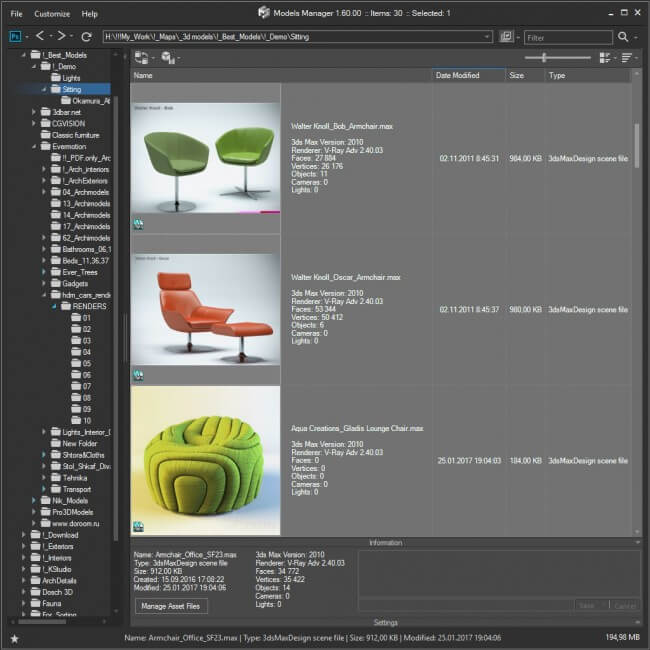Organizing your asset structure will significantly improve your productivity and make the process of working on a 3D scene more convenient and efficient.
Below are steps and recommendations to help you create a convenient and logical directory structure for your 3D assets and projects:
Defining Main Categories
Before beginning, it’s important to define the asset categories you plan to use in your projects.
For example, assets can be divided into main categories such as models, materials, textures, and lighting.
This simplification aids in resource searching.
Project Manager inherently offers such asset organization, with a
division into several tabs – Models, Materials, Textures, and IES for lighting work.
Creating a Hierarchical Directory Structure
Create a separate directory for each category with subdirectories corresponding to subcategories or asset types.
For instance, within the “Models” tab, there could be “Exterior” catalogs with subdirectories “Transport“, “Plants“, “Architectural Details”, and “Interior” with subdirectories “Furniture“, “Plants“, etc.
Virtual catalogs allow you to combine directories from different locations, including system and network drives, without needing to duplicate folders.
Thus, if necessary, you can place one and the same folder in several different catalogs.
Learn more about what virtual catalogs and categories in Project Manager are from
this article: Organize and Access 3D Assets using Directories, Virtual Catalogs and Categories
Naming Files and Directories. Organization by Categories
Apply logical naming for files and directories, avoiding spaces, special symbols, and overly long names.
This facilitates easy identification and finding of the needed assets.
For example, furniture model file names could include the item’s name and features (e.g., “Table_Wood_Modern”).
But to avoid renaming all your assets, you can simply add assets to a category or several for even easier searching.
For example, categories such as “wooden“, “metal“, “exterior” can be used for quick asset filtering.
Working on Projects
When creating a new project, place all resources, assets, and files used by the project in its own folder to maintain organization and ensure nothing gets lost.
Structure your projects by years, using subdirectories for each project within.
A useful structure for working on projects is Year-Month-Date/Client/Project Name/ with subfolders “Project” (Main project scenes) with a subfolder for backups and variants,
“Output” – for files with renderings with subfolders “draft” and “final”,
“references” with sample photographs and other materials needed for project completion, and “Assets” – with xRefs and textures used in the project.
Also, it would be convenient to create a category with assets you plan to use in the project.
Name it, for example, “Project Collections,” place it first in the category section, and add to it assets that might be needed in your project.
Backup
Do not forget to regularly make backup copies of your projects and asset library.
This prevents data loss in case of technical failures or other problems. Upon completion of a project, move it to the archive.
Depending on the project’s importance, several storage locations for backups can be used to help restore the project if one of the backups is lost due to physical, software failure, or virus activity.
Follow the 3-2-1 rule for backup: keep three copies of data on two different media, one of which is located in a different location. This ensures a high level of data security.
Efficiently organizing assets with Project Manager in 3ds Max not only boosts your productivity but also makes the creative process more enjoyable.
By implementing the aforementioned approaches, you can create a convenient and logical structure for your assets, simplifying your work and enabling faster achievement of better results in your 3D projects.
How do you organize and structure your asset libraries and projects to ensure easy access and work efficiency?
$60.00Add to Cart
 Translate
Translate







